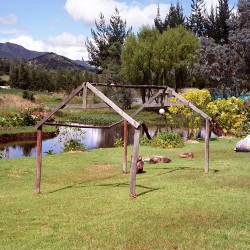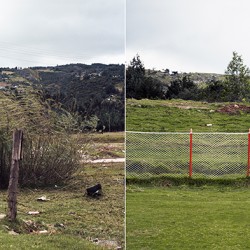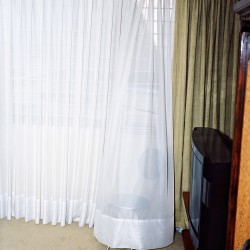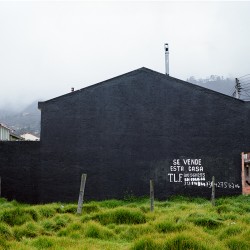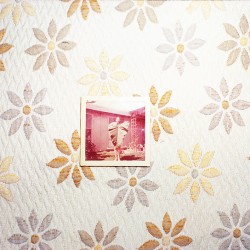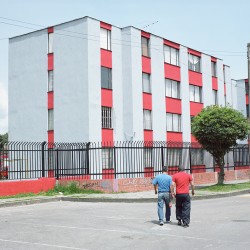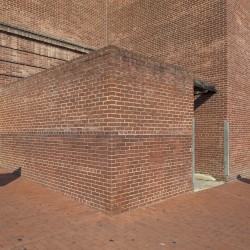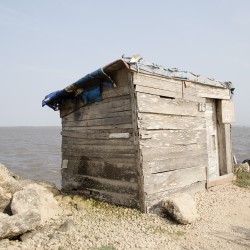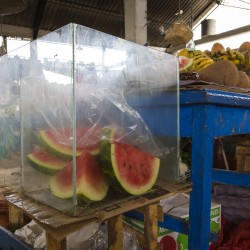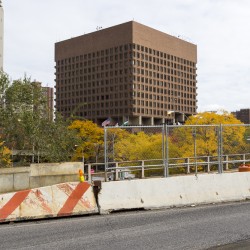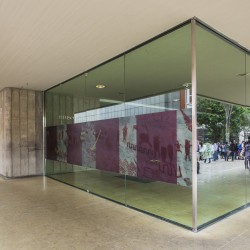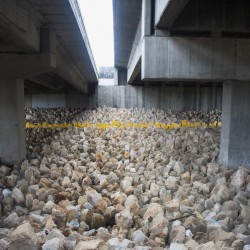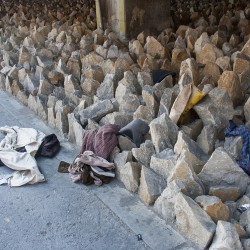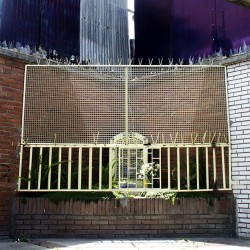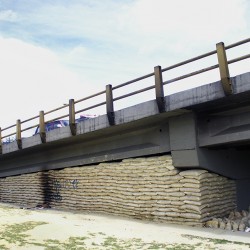At the end of the 1960s, the philosopher Henri Lefebvre wrote and defined two types of space: absolute and abstract. Absolute being an individual space, behind the obligations of the law, where one creates their own images and symbols, thereby creating their own world. He defined abstract as a space determined or controlled by an entity, corporate or governmental. It was in this time, during a revolution in France that almost collapsed the country, when the division between public space – governed by the corporations (consumerism) – and the private, the people (socialism) – brought thinkers to investigate and propose views on the space that surrounds us.
It’s with this influence in mind that Galería MÜ has the pleasure to announce its transition from a physical to a virtual location, one in which limits are defined not by its material borders, but rather by the reflection on its position in a world potentially without edges. This first Internet exhibition, titled Límite and presented the photographic work of four Colombian artists, Fernando Cruz & Raúl Cristancho, Jairo Llano, and Mateo Gómez, that like Lefebvre, find the theme of space relevant, taking it on through concepts of habitat, passage, and assumption.
Bogotá is a point of departure for these photographers, perhaps due to its size and socio-economic context, has been the place of a slow immigration of people from the extremities of the country, that seeking work and a future have been left without land and with a longing for their own space.
With his series A Place to Live, Mateo Gómez has entered in spaces both absolute and abstract in which he has found a reverence toward the familial, heritage, the future, expansion, and the ephemeral. We can see occupied spaces, usually confined by walls, curtains, or gates, as well as empty spaces for assuming in some future.
For their part, the photographs from the series Bajo los Puentes [Under the Bridges] by Fernando Cruz & Raúl Cristancho investigate the attribute of a city under the influence of population growth, of which, in some cases, has been left, literally, under its bridges. The result is a series of images taken at the end of the 90s in which the city, understood as a result of the definitions place by its officials, has appropriated the non-viewed spaces in order to converte them in spaces of contemplation. In places where we usually find homeless, we now find rocks acting as knives. The borders of these gardens are defined by a shadow projected by the bridges, places of passage for walkers between their home and another destination.
Jairo Llano ha tomado otra visión del espacio privado. As such assuming the form of architecture and inasmuch, an internal space. A space that converts into a meeting place or for public consumption, but through the dimensions of a private room. He proposes the idea that upon occupying the public space from a private point of view, we can imagine any space, whether it be personal or monitored by the government or a corporation.
The game of how we define physical space in Lefebvrian terms makes us think of our reality, whether it be physical or virtual. Can we assume an absolute position when the abstract links us to an entity or to the socialization of our information and existence?
Upon reading this text via Internet, we are automatically partaking in a conversation about our perception of the virtual. The basic idea of the Internet includes the ability to search or receive information without the worries of an abstract space – monitoring, following. But with news that has come to light in recent years, we’ve realized that the Internet is a purely abstract space; the result being a desire to occupy a virtual space in an absolute way.
This analysis of the virtual is easily applied to the physical. Great cities like London or New York don’t allow for a person to be off the grid. Cameras that surround us, our cellular phones, and the general public don’t allow us to have the capability of existing in these absolute spaces.
Through photographs – which we consider real – we can see the physical limits that define the spaces surrounded by humanity. We respect the limits, but in some cases, we don’t believe they should exist. These photographers show us how we can identify these spaces and appropriate them in order to understand the form and practicality of their existence, whether it be physical or virtual.
- Jairo A Llano
- Jairo A Llano
- Jairo A Llano
- Jairo A Llano
- Fernando Cruz & Raúl Cristancho
- Fernando Cruz & Raúl Cristancho
- Fernando Cruz & Raúl Cristancho
- Fernando Cruz & Raúl Cristancho

